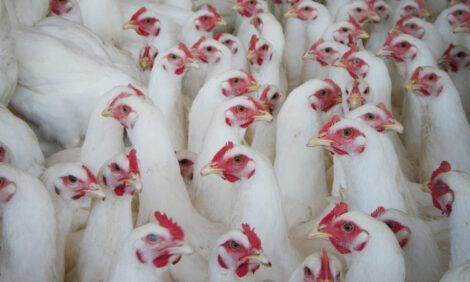



UK group evaluates Campylobacter reduction methods
A recent longitudinal study found that offering financial incentives and ceasing the practice of thinning led to a reduction in the prevalence of CampylobacterWords Melanie Epp
The study, which was done by the UK-based FAI and 2 Sisters Food Group, was conducted in an effort to lower the prevalence of the bacteria.
.jpeg)
Campylobacter is the UK’s leading cause of food poisoning. Each year, the bacterial infection causes 280,000 cases of acute enteritis and 100 deaths in the UK. Four in five cases of campylobacteriosis in people can be traced back to contaminated chicken. Furthermore, the study found that there is a correlation between its pervasiveness in poultry flocks and risk of human infection. As a result, it is considered a ‘One Health’ challenge.
The introduction and spread of Campylobacter is still not fully understood in poultry flocks. This lack of understanding makes it difficult to implement evidence-based control measures. Risks that may be associated with the spread of Campylobacter include: seasonal temperatures, livestock movement, flock size, type of husbandry system, biosecurity and the practice of thinning. Thinning is a routine practice in UK broiler production where 20-30 percent of birds are removed for processing at around day 35 of production. The remaining birds are left to grow larger for another 7 days, approximately.
Financial incentive study
In October of 2013, the financial incentive study evaluated 55 broiler farms with a total of 483 houses in North Lincolnshire. During the first 12-month period, farmers did not receive an incentive based on Campylobacter house status. However, they were rewarded with £50 for each ‘not highly contaminated’ broiler house by boot swab sampling, and an additional £50 for every house that received a ‘not highly contaminated’ result pre-depopulation.
The incentive was spread between farm managers (50 percent) and stockpersons (25 percent each). Note that farms produced an average of seven crops per year, and had between 4 and 16 houses on each farm, rearing an average of 29,000 birds in each house.
Thinning study
The thinning study, which began in October 2013, included 39 broiler farms with 276 houses. During the first 12 months, thinning was practiced using a catching crew, typically around day 34 at 1.75kg. During the following 12-month period, thinning was not practiced. Instead, all chickens were grown to a target weight of around 2.2kg, a weight that was reached on average in 36 days. During the no-thinning period, farms produced approximately eight crops per year.
Cessation of thinning included the implementation of a package of measures. This package included: cessation of thinning; reducing stocking rate of chicks at placement (15.75 birds per m2 versus 19.15 birds per m2); and reduction of the age and weight profile of birds at depopulation. In addition, a financial incentive scheme was implemented after the first 12-month period, rewarding farmers £25 for each house that tested as ‘not highly contaminated.’
It should be noted that farms in this study had between 2 and 12 houses each, and reared an average of 21,468 birds in each house, and an average of 146,000 birds per crop.
The results
The results were positive, and revealed that both financial incentives and cessation of thinning played a significant role in the reduction of Campylobacter. Houses on farms receiving an incentive, for instance, had a 54 percent reduction in odds of being highly contaminated with Campylobacter. Houses that were thinned had a 309 percent increase in odds of being highly contaminated due to a variety of factors including stress, physical handling by catching crews, multiple periods of feed withdrawal, and equipment.
“The results support implementation of farmer and stockperson financial incentive schemes, and cessation of thinning as part of a Campylobacter control plan in commercial broiler houses,” concluded the study’s authors.
It should be noted that while thinning did influence Campylobacter prevalence, future studies should look at related farm-level factors, such as stocking density, bird age and weight profile and associated economic consequences, in order to better determine an industry best practice for the control of Campylobacter.
The study was published in Vet Record on 15th November 2018












